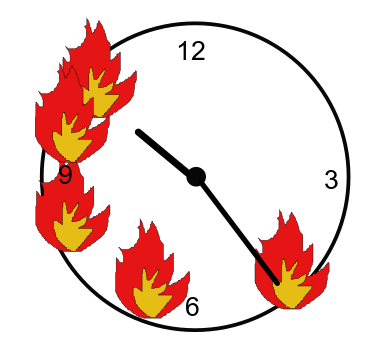Bushfire Ready
What can we do to prevent or prepare for bushfires?
Go to Challenge | 12 teams have entered this challenge.

Team 1083
Over the past year, extreme weather events including bushfires have resulted in many lives lost and property and animals damaged. With the trend of extreme weather events increasing in intensity and frequency, we aimed to model this trend to highlight the increasing risks it brings for use in influencing policy decisions, program development as well as prevention and preparation.
With some of the national trends having already been highlighted in the Climate Council 2017 report ( Cranking Up The Intensity: Climate Change and Extreme Weather Events ), we aimed to analyse the local trends for use in the Sunshine Coast. This was done by performing a preliminary analysis of the trends in different historical measures of climate including: rainfall, seawater temperature, atmospheric temperature and other weather and climate data (humidity, wind speed) to try identify any noticeable trends and correlations in extreme weather.
The risk for bushfires is known to be especially high between late winter and early spring, where there is a wet season of high rainfall, allowing for growth of grass and fuel for fires, followed by a dry season of low rainfall, creating dry soil. We sought to identify any trends of this in the data.
Though our analysis is preliminary, there seems to be much more trends to be uncovered in the data for the future.
We are working have used data sets relating to climate in an attempt to develop a tool to analyse the risk/severity of bushfires.
We planned to tackle this as by looking at three main datasets Rainfall, Water Temperature, Atmospheric Qualities.
Data aggregated over 7 day and 14 day periods
Rainfall: Predicting moisture
Water Temperature: Predicting heat waves
Instantaneous
Atmospheric Temperature: Risk of fire starting
Humidity: Risk of fire starting
Wind speed: Risk of fire spreading
To develop a tool to analyse the risk/severity of bushfires, we have used datasets for measures of climate near the Sunshine Coast region.
Detailed datasets were sourced mainly from the Bureau of Meterology. We focused on datasets including: daily rainfall, sea water temperature, daily atmospheric temperature and other atmospheric qualities (humidity, windspeed).
In our preliminary analysis, we have analysed the trends over time for each measure of climate. This was performed by plotting the datasets against time.
For datasets where it was possible, for each measure, we classified data as an extreme weather events if they were 2 standard deviations above the mean.
What the data can be used to predict:
Extreme high temperatures: Heat waves
Extreme rainfall: Floods/downpour, high humidity levels.
For water temperature and rainfall, there have been many occurrences of extreme weather events (measurements 2 standard deviations above the mean). These correlate to heatwaves, floods/downpour and high humidity events. For rainfall, since 1997, there have been 340 cases of extreme rainfall events and the value of the maximum rainfall amount appears to be increasing over the years. Though the analysis is still preliminary and more trends can be extracted from the data in the future.
Description of Use Analysing trends in rainfall for the location to identify patterns in extreme rainfall events.
Go to Challenge | 12 teams have entered this challenge.
Go to Challenge | 8 teams have entered this challenge.